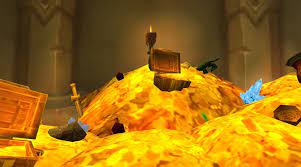Sport Introduction Cycle ball, also known as “radball” in some parts of the world, is a unique and thrilling sport that combines the grace of cycling with the intensity of ball games. Played on specially designed bicycles, cycle ball offers an exciting spectacle for both participants and spectators. This guide will delve deep into the rules and regulations of cycle ball, shedding light on how this fascinating sport is played, the equipment required, and the strategies that make it an exhilarating experience. History of Cycle Ball Before diving into the rules of cycle ball, it’s essential to understand the historical context of this sport. Cycle ball originated in Germany in the late 19th century, making it one of the oldest bicycle sports in the world. It quickly gained popularity in Europe and has since spread to other continents. Cycle ball is often compared to soccer due to its similar objective, which is to score goals, but it’s played on bicycles instead of with feet. The sport’s unique blend of cycling skills, coordination, and teamwork has attracted dedicated players and fans throughout its history. The Basics 1. The Field: Cycle ball is typically played on an indoor court, with specific dimensions that can vary but are usually around 11 meters wide and 14 meters long. The court features a goal on each end, much like a soccer field. 2. The Teams: Each team consists of two players. In international competitions, teams often represent their countries, and the players are typically very skilled, making the game incredibly competitive. 3. The Ball: The ball used in cycle ball is a small, leather-covered sphere. It’s slightly smaller than a soccer ball, making it easier to handle on bicycles. 4. The Bicycles: Cycle ball bicycles are unique and designed for the sport. They have no brakes and are often single-speed. The front wheel is significantly smaller than the rear wheel, which allows for more precise control and balance. The bicycles are also built to be extremely durable, as they must endure frequent collisions and rough play. Rules and Gameplay Cycle ball is a fast-paced sport with straightforward rules, yet it requires exceptional skill, coordination, and teamwork. 1. Objective: The main objective of cycle ball is to score goals by propelling the ball into the opponent’s goal while riding your bicycle. Teams earn points when the ball successfully crosses the opponent’s goal line. 2. Duration: A typical cycle ball match consists of two halves, each lasting 7 to 10 minutes, depending on the competition’s rules. Players must aim to score as many goals as possible during this time. 3. Starting Play: The game begins with a kickoff from the center of the court. The two teams line up facing each other, and the referee drops the ball between them. This is similar to the kickoff in soccer. 4. Ball Handling: Players use various parts of their bodies to control and pass the ball, primarily their feet and heads. They can even use the wheels of their bicycles to keep the ball in motion. 5. Scoring: To score a goal, the ball must completely cross the opponent’s goal line. The team with the most goals at the end of the match is declared the winner. 6. Fouls: Cycle ball has its own set of rules and fouls, which may result in free kicks for the opposing team. Common fouls include dangerous play, deliberate handball, and aggressive behavior. Physical contact between players is expected to some extent, but excessive aggression is penalized. 7. Free Kicks: When a foul is called, the opposing team is awarded a free kick from the location of the foul. Free kicks are an opportunity to create scoring opportunities, and players use them to pass the ball to a teammate or attempt a direct shot on goal. 8. Tiebreakers: In the case of a tie, extra time or a penalty shootout may be used to determine the winner, depending on the competition’s rules. Equipment 1. Bicycles: Cycle ball bicycles are highly specialized and are designed for the sport. They are built for balance, durability, and maneuverability. The absence of brakes allows players to control their speed by pedaling backward. 2. Protective Gear: Players wear helmets to protect themselves from potential head injuries. Some players also wear shin guards and knee pads for additional safety. 3. Clothing: Players typically wear uniforms or sport-specific attire, such as jerseys and shorts, to promote team identity and enable free movement. Strategies Cycle ball requires more than just pedaling and kicking skills. Successful teams employ various strategies to outmaneuver their opponents. Here are some key strategies in cycle ball: 1. Positioning: Players must maintain effective positioning on the court, creating passing lanes and open shooting opportunities. Good positioning can be the difference between scoring a goal and losing possession. 2. Passing and Ball Control: Precise passing is essential in cycle ball. Players use their feet, heads, and bicycles to control and pass the ball. Quick and accurate passes can disorient the opposing team’s defense. 3. Defensive Organization: A well-organized defense is crucial in cycle ball. Teams need to work together to block shots and prevent the opposing team from scoring. 4. Set Plays: Teams often practice set plays, including free kicks and corner kicks, to create scoring opportunities. These rehearsed routines help exploit the opponent’s weaknesses. 5. Communication: Effective communication is key. Players need to constantly communicate with their teammates to coordinate movements, signal for passes, and call for help when needed. Common Fouls and Penalties 1. Dangerous Play: Engaging in reckless or dangerous actions, such as excessive force during challenges, can result in a foul. 2. Handball: Deliberately using the hands to control the ball is a foul. Players should primarily use their feet, heads, and bicycles to interact with the ball. 3. Obstruction: Blocking an opponent’s movement without making an attempt to play the ball is considered obstruction and results in a foul. 4. Aggressive Behavior: Excessive aggression, such as pushing or hitting an opponent, is not tolerated and leads to fouls and potential disciplinary action. 5. Foul Play: Any actions that disrupt the game, such as wasting time or continuously committing fouls, can result in penalties. Cycle Ball Competitions Cycle ball is played at various levels, from local clubs to international competitions. The most prestigious event in cycle ball is the UCI Cycle-Ball World Championships, which features top teams from around the world competing for the title. Discover the latest in sports news, scores, and analysis Acrobat gymnastic and Cycle ball. Stay updated on your favorite teams and athletes with us Apart from international competitions, cycle ball is also played at the club level, with numerous tournaments and leagues organized by different countries. These local and national competitions help develop talent and maintain the sport’s popularity. Conclusion Cycle ball is a captivating sport that combines the elegance of cycling with the thrill of ball games. The unique bicycles, skilled players, and fast-paced action make it a sport worth watching and playing. With its rich history and simple yet engaging rules, cycle ball continues to attract dedicated players and passionate fans around the world. To become proficient in cycle ball, one must master the art of cycling, ball control, and teamwork. As players navigate the court on their specialized bicycles, they engage in a dynamic and strategic game that demands precision, coordination, and effective communication. While there are common fouls and penalties, the sport remains rooted in sportsmanship and fair play. Whether you’re a newcomer to cycle ball or a long-time fan, the excitement of the sport is undeniable. As cycle ball continues to evolve and grow, its status as a thrilling and unique sport is secure, offering unforgettable moments for both players and spectators alike.
Cycle Ball Rules: A Comprehensive Guide to the Exciting





